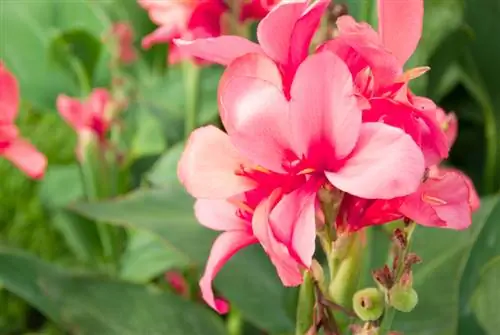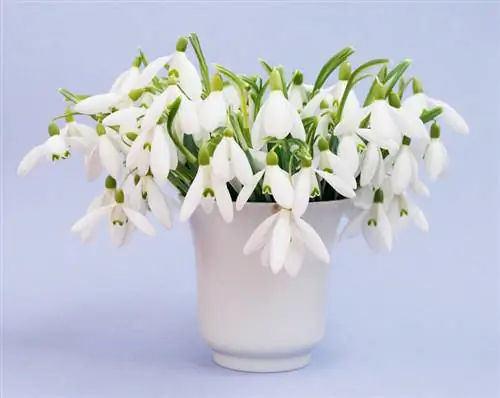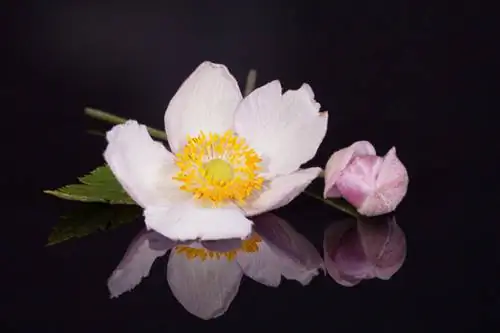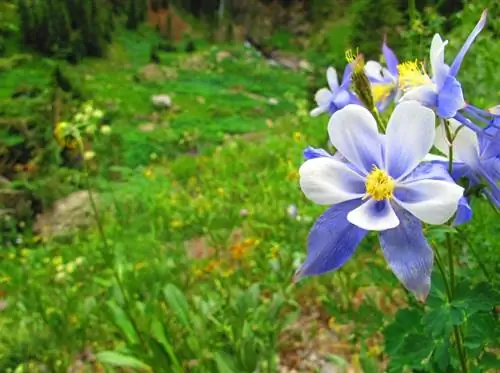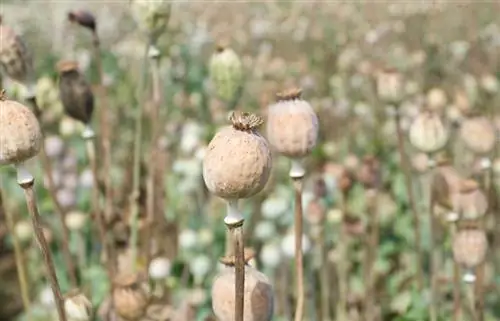- Author admin [email protected].
- Public 2023-12-16 16:46.
- Last modified 2025-06-01 06:02.
In the care program for a bromeliad, cutting is only the focus when it comes to vegetative propagation. Even the withered flowers cannot be cut because they only bloom once and the plant then dies. We will be happy to explain to you when and how to professionally cut the flowering and foliage plant.
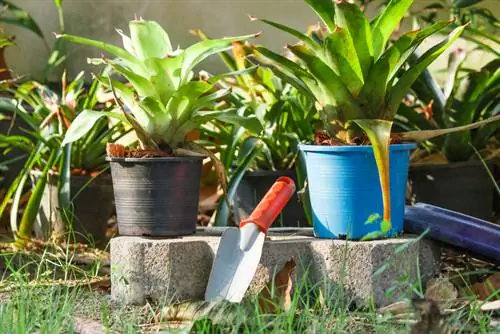
When and how should you prune bromeliads?
Pruning bromeliads is mainly necessary for vegetative propagation by cutting off side shoots. They should be at least 10 cm tall and have their own rosette of leaves. A sharp, disinfected knife is suitable for cutting. Dried leaves should be pulled instead of cut.
Every side shoot is a clone - this is how to cut it correctly
The vast majority of bromeliad species develop side shoots during and after flowering. These grow at the base and have exactly the same, magnificent attributes of the mother plant. If such a child has developed its own rosette of leaves and has reached a height of at least 10 cm, you can cut it off. How to do it right:
- Sharpen a knife and disinfect it with high-percentage alcohol
- Cut off the mature offshoot including roots and leaf rosette
- Let the cut dry for 1 to 2 hours
Pott the child in a lime-free, crumbly substrate. Pour some soft, room temperature water into the small rosette and also moisten the soil. By putting a transparent hood over the growing pot, a warm, humid microclimate is created that promotes rooting.
Dried leaves - it’s better to pluck them out instead of cutting them
It is part of the normal growth process that every now and then a leaf on a bromeliad will shrink and dry out. Since the cut carries the risk of infection or pest infestation, the knife is left out of the game in this case. Wait until the plant releases the dead foliage on its own. With a slight pull, the leaf can be plucked out or removed.
Tip
Peel a ripe pineapple for the fruity-sweet enjoyment, first cut off the leaf with a little of the pulp. The green foliage crown is far too good to be disposed of in the compost. Remove the lower leaves and the pulp around the stem. Potted in a lime-free substrate, there is a good chance that a young pineapple plant will develop from it in a warm, bright location.


